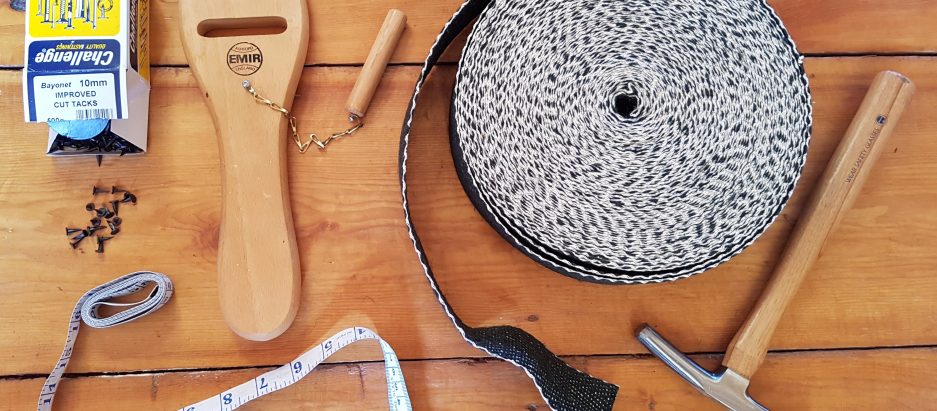The round backed Spanish chair I am working on at the moment has a sprung seat and when I stripped it back I found 7 springs that looked very much worse for wear.

You can see some of the damage in the picture, but take my word for it – they were filthy!
Initially I tried to rub them down with wire wool, this was not successful at all, the rust just wasn’t budging. I did a quick Google and by far the cheapest solution seemed to be white vinegar. All of the tutorials I found suggested submerging the rusty item completely – easy when it’s an old wrench but harder when it’s a 10 inch box spring.
I looked around for sources to bulk buy white vinegar and the most common suggestions were Chinese supermarkets and online. Buying in bulk online tends to get more expensive when buying liquids as they are so heavy, the shipping costs eat into any savings you might find. I don’t have any Chinese supermarkets near my house so I looked instead to mainstream stores. In the end, I tried Sainsbury’s, Tesco and Wilko’s.
Initially I bought a pint of store brand vinegar from Sainsbury’s for 69p to patch test one spring. I filled a jug with the vinegar and submerged half of the spring overnight, weighted down to get as much metal in the liquid as possible.

To my delight, rubbing it down the next morning with wire wool was a success! However I needed more vinegar and thought I could get it for a better price. I then went to Wilko’s were I found litre spray bottles for £1. I bought 6 and then went to Tesco were I found own brand pints for 39p, so I bought 6 more. Disaster struck when I drove home, three of the Wilko’s bottles opened in the boot of my car, resulting in three litres of vinegar sloshing around in the space where the spare tyre could go. It stank and I wasn’t impressed with the poor quality control but to be fair to Wilko’s, they refunded me and gave me some cleaning supplies to improve the smell. It still took almost 2 months for the smell to dissipate completely.
Three litres of vinegar down, I persevered and poured the remaining bottles into a 10 litre bucket I had at home. I managed to squeeze all seven springs into the liquid and left them to soak for several hours.

I hadn’t enjoyed getting my hands covered in vinegar with my test spring so I combined some surgical gloves to keep my hands dry and gardening gloves over the top to prevent tears. Then I rubbed down the halves of the springs that had soaked with wire wool before turning them upside down and repeating the process. I did the whole lot outside on a sunny day but it was crazy how quickly the metal started to discolour once it was left to dry.
In the end, I treated them one at a time, dipping them once more in vinegar, giving them an extra rub down, then rubbed vegetable oil into the metal to seal it from oxygen and prevent further rusting.
So there you have it! I originally thought I would have to ditch these and buy new ones but it never hurts to try and restore what you have first, you never know – it might just pay off!




Brilliant! I have just stripped a very old chaise longue and the springs are exactly like your! So will try your tips thank you 😀